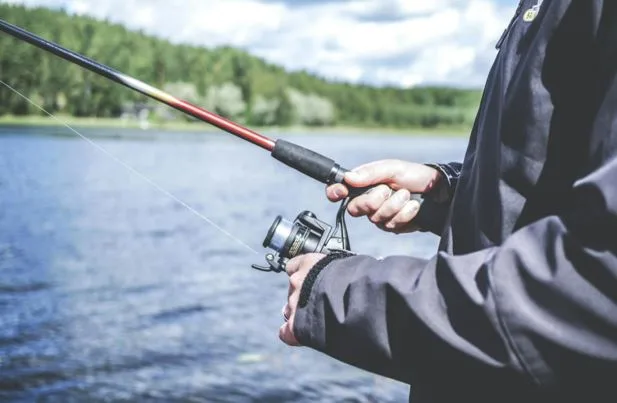Elk Hair Caddis: A Simple Guide To Fishing With This Dry Fly
There’s something special about watching a trout take a dry fly. It’s a mix of art, patience, and excitement. Out of all the countless dry flies that have survived the ages, not many are more dependable than the elk hair caddis. Whether you’re a seasoned angler with years of experience or just getting started in the world of fly fishing, this pattern offers simplicity, versatility, and high performance. Its buoyant profile and natural appearance make it a must-have in every fly box.
In this tutorial, you’ll learn everything you want to know about fishing with the elk hair caddis, from why it’s so effective to how to fish it in different conditions.
So, wade into the here and now and learn why this little fly has become so legendary.
What Makes the Elk Hair Caddis Fly So Successful?
The elk hair caddis fly is an imitation of adult caddisflies, which are perhaps the most abundant insects in freshwater streams. Its definitive features—floatable elk hair wings, a buggy dubbed body, and a palmered hackle—are what produce life-like action and superior floatation. These features aren’t merely for appearance; they’re functional, too. The natural rigidity of elk hair maintains the fly afloat and high on the water’s surface, even in turbulent riffles.
In addition, the fly’s profile is that of a struggling or skittering adult caddisfly, which provokes aggressive strikes from feeding trout. Fish tend to key on movement and commotion on the surface, something this fly does very well due to its build. Its visibility and ability to ride high provide more time to set the hook correctly.
When and Where to Use It
Timing is key with fly fishing, and the elk hair caddis performs with caddis hatches, particularly in spring through early fall. While optimum during times of peak emergence, it’s also a great attractor pattern when fish are feeding visually for food.
This fly excels at fast to moderate currents—mountain streams, pocket water, and rifles come to mind. Its rugged and buoyant construction keeps it sitting high, even in rough water. Further, the elk hair caddis isn’t just a river and stream fly; it can surprisingly excel in still water along the edges or where insects are emerging.
How to Fish the Elk Hair Caddis
Fishing for the elk hair caddis can be easy and fun. One of the most effective means is dead drift—letting the fly drift naturally with the current. To do this, cast upstream or at a slight angle into the current and mend line as needed to take drag off. Let the fly drift naturally down as you observe for any movement.
Or try skittering the fly across the water’s surface. Caddisflies emit a crazed, spasmodic action as they lay eggs, and this action will trigger furious strikes by trout. A series of gentle twitches with your rod tip as it drifts can exactly mimic this action.
Don’t be afraid to give the retrieve a go. At times, a delicate pull or twist is all that’s required to turn an inquisitive fish into a committed one. Furthermore, using it in conjunction with a dropper nymph below can double your chances—allowing you to cover both surface and sub-surface feeders.
Best Colors and Sizes to Keep in Your Box
The elk hair caddis comes in a wide variety of colors, each one specifically intended to mimic a particular species or stand out in specific water conditions. Tan is the most traditional and widest-spectrum best color, especially for mimicking generic caddisflies. Olive and gray make excellent, solid options for use under any circumstance. Yellow or orange hues can be employed to add visibility when fishing in low light or in more rapid water.
As far as size goes, #14 to #18 is usually the ideal size for the majority of trout streams. Down or up-sizing can, however, be utilized to imitate the hatch better or show a more discernible profile, depending on what the fish are eating.
Tying the Elk Hair Caddis (Optional for the DIY Angler)
If you fly fish and tie your flies, the elk hair caddis is a great one to learn how to do. It’s simple to tie but encompasses essential techniques like dubbing, palmering hackle, and elk hair manipulation. And by tying it yourself, you can also make it in the color, size, and materials you require for your particular fishing scenario.
You need a dry fly hook, thread, dry fly hackle, body dubbing, and elk hair for the wing. Again, it pays to spend the extra money for good-quality materials. Be careful to flare the elk hair so that it creates that perfect, buoyant tent shape.
Common Mistakes to Avoid
While the elk hair caddis is forgiving, there are some common mistakes to watch out for. One, avoid drag—nothing scatters fish more quickly than a fly zipping across the water abnormally. Two, don’t use too heavy a tippet; a 5X or 6X tippet will introduce the fly more gently. Three, check your fly often. After a handful of takes or fake casts, the elk hair can get waterlogged. A squeeze with an absorbent cloth or a light use of floatant will restore its buoyancy.
Why It Deserves a Spot in Every Fly Box
Anglers keep coming back to the elk hair caddis because it gets the job done. Its visibility, realism, and action make it a go-to for a wide range of conditions. Even in situations where fish aren’t actually on caddis, the fly’s profile does seem to elicit a response based on its overall appeal. It’s a confidence fly—something you can attach when nothing else seems to be working and still have a reasonable opportunity for success.
Also, because of its versatility, this fly is simple to mix with other techniques. Either in solitude or as part of a tandem rig, it leaves you flexible and ready for whatever the river throws your way.
Conclusion
You don’t need a dozen different fly patterns to catch fish—you need several quality ones. The Elk Hair Caddis is one of those patterns that will always catch the job with minimal fuss. It floats well, evokes strikes, and can be adapted to nearly any trout stream. Being able to use it efficiently means fewer minutes spent changing flies and more catching fish.
Whether you are heading to a new river or staying with a familiar local creek, a few Elk Hair Caddis flies in your fly box are a good idea. After all, simplicity typically rules success in fly fishing, and this fly is founded upon that notion.






